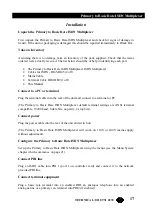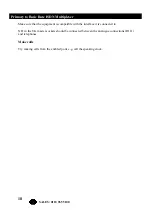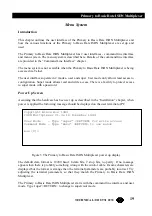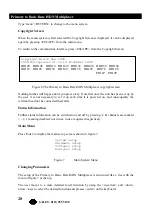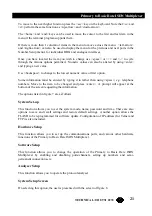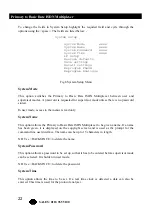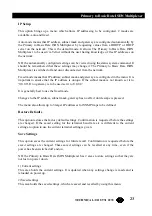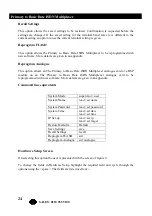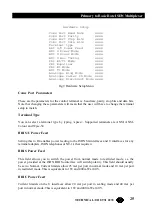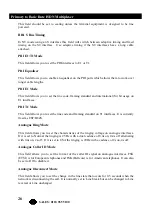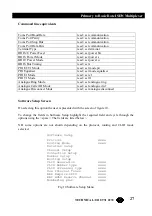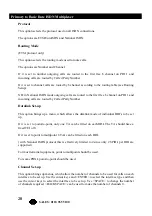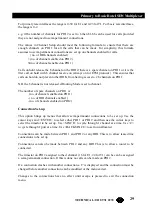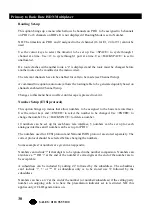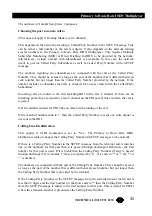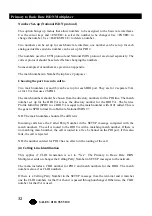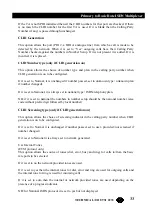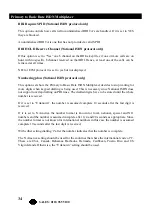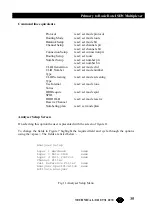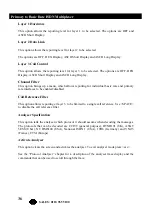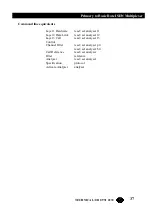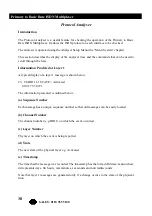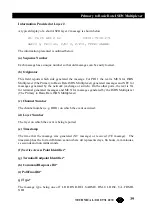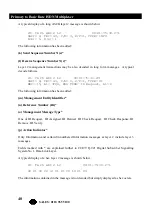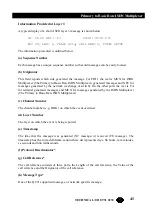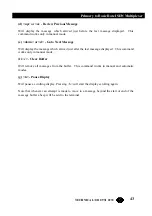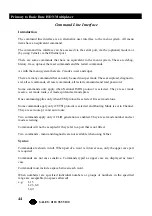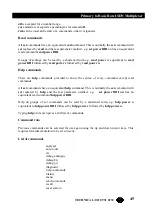
31
Primary to Basic Rate ISDN Multiplexer
TECHNICAL: 0118 931 2233
The numbers in Number Setup have 2 purposes:
Choosing the port to send a call to
(This does not apply if Routing Mode is set to channel)
This depends on the network providing a Called Party Number in the SETUP message. This
can be either a full number or the last few digits. It also depends on the network routing
several numbers to the Primary to Basic Rate ISDN Multiplexer. This requires Multiple
Subscriber Numbering (MSN) or Direct Dialling In (DDI) to be provided by the network.
Alternatively, a single number with subaddresses is acceptable. In this case, the network
needs to provide Called Party Subaddress as well as Called Party Number in the SETUP
message.
The numbers (ignoring any subaddress) are compared with the end of the Called Party
Number. They should be at least as long as the part of the number that is different between
each number but not longer than the Called Party Number provided by the network. If the
number includes a subaddress then this is checked for an exact match with the Called Party
Subaddress.
Incoming calls are routed to the first matching BRI with a free b channel. If there are no
matching ports, they are routed to a free b channel on the PRI port. If this also fails, the call is
rejected.
NB: the number entered for PRI 2 has no effect on the routing of the call.
If the matched number ends in '+' then the Called Party Number (except any extra digits) is
not sent to the BRI.
Calling Line Identification
This applies if CLID Generation is set to “Yes”. The Primary to Basic Rate ISDN
Multiplexer adds or changes the Calling Party Number in SETUP messages to the network.
If there is a Calling Party Number in the SETUP message from the terminal and it matches
one of the numbers for that port then it is passed through unchanged. Otherwise, the first
number for that port is used. If it is blank then the Calling Party Number (if any) is passed
through unchanged. If it contains '?' these are replaced by '0'. If it ends in '*' or '+' the '*' or
'+' is omitted.
The numbers are compared with the end of the Calling Party Number. They should be at least
as long as the part of the number that is different between each number but not longer than
the Calling Party Number that is provided by the terminal.
If the Calling Party Number in the SETUP message from the terminal doesn't match but is
less than 5 digits and the first number for that port ends in '*' then the Calling Party Number
from the SETUP message is added to the first number for that port. This is useful for PBX's
where the extension number is provided as the Calling Party Number.

